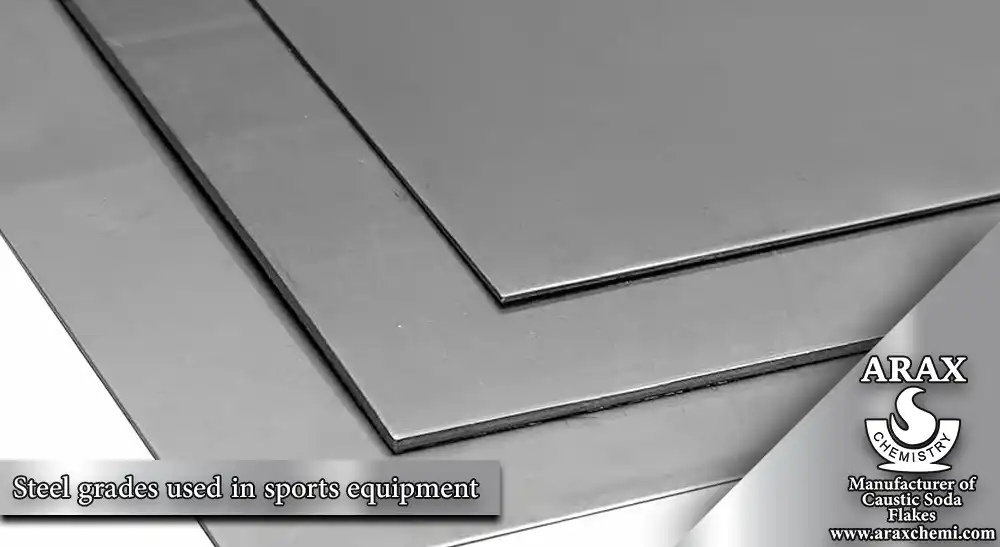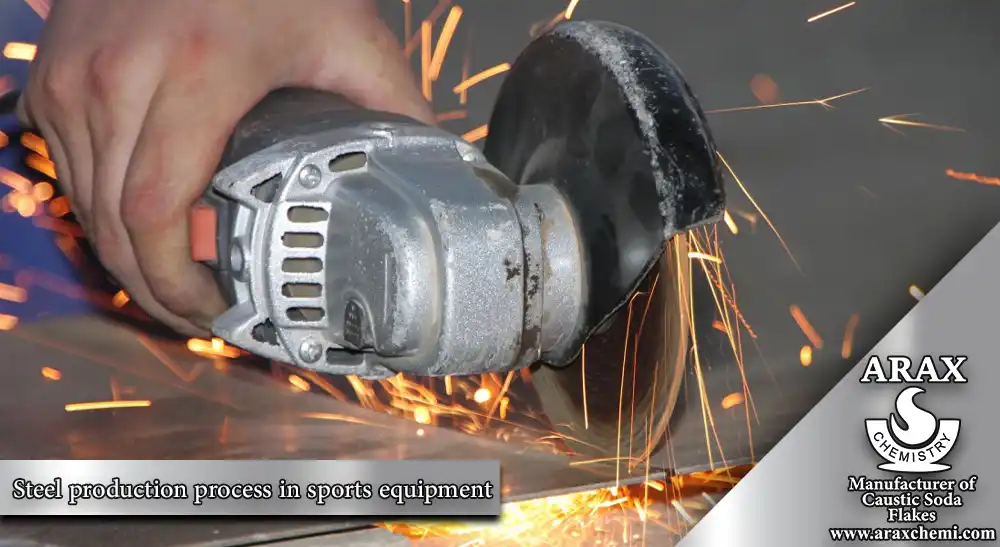Stainless steel is one of the most important and versatile materials in various industries, including the sports equipment industry. Due to its unique mechanical and chemical properties, stainless steel is widely used in many sports equipment. This article explores the types of stainless steel used in sports equipment, the required thicknesses for each type of equipment, and other related characteristics of this material.
Properties and Advantages of Using Stainless Steel in Sports Equipment
Stainless steel is recognized as a key material in the production of sports equipment due to its characteristics such as corrosion resistance, high strength, formability, flexibility, attractive appearance, and long lifespan. These properties ensure that sports equipment made from stainless steel has greater durability and can withstand significant mechanical stresses.
Corrosion Resistance: Stainless steels contain chromium, which provides high resistance to corrosion. This property is especially important in humid environments or when equipment comes into contact with body sweat.
High Strength: Stainless steel has high tensile and compressive strength, making it ideal for manufacturing sports equipment that needs to withstand heavy loads.
Formability: Stainless steel can be easily shaped into various forms, allowing manufacturers to produce sports equipment with diverse and efficient designs.
Attractive Appearance and Durability: Stainless steel not only possesses excellent mechanical properties but also has a shiny and attractive appearance, giving sports equipment a professional and modern look. Additionally, it has high durability, which extends the useful life of the equipment.
Stainless Steel Grades Used in Sports Equipment
The stainless steels used in sports equipment are categorized into different grades, each with specific characteristics. Below are some of the most important stainless steel grades used in the sports equipment industry:

Stainless Steel 304: This grade is one of the most widely used stainless steels due to its high corrosion resistance, suitable strength, and good formability. It is used in manufacturing sports equipment such as gym machines, barbells, and weightlifting bars. The required thickness for various equipment depends on the application; for example, for weightlifting bars, a thickness of 2 to 3 mm is appropriate.
Stainless Steel 316: This grade has higher corrosion resistance, particularly in environments containing chlorine and salt. Therefore, stainless steel 316 is used in manufacturing sports equipment for pools and humid environments. For pool equipment such as ladders and handrails, a thickness of 3 to 4 mm is typically used.
Required Thicknesses for Various Sports Equipment
The thickness of stainless steel used in sports equipment depends on the type of equipment and the mechanical stresses it needs to withstand. Below are some types of sports equipment and the typical thicknesses of stainless steel used in them:
Gym Machines: These machines include various types of strength training and cardio equipment. The thickness of stainless steel used in these machines is usually between 2 to 4 mm, depending on the type of machine and the weight it needs to bear.
Barbells and Weightlifting Bars: These bars need to bear heavy weights and must prevent bending or breaking. The typical thickness for these bars ranges from 2 to 3 mm.
Pool and Humid Environment Equipment: This equipment needs high corrosion resistance due to constant contact with water. The thickness of stainless steel used in these pieces is between 3 to 4 mm.
Portable Sports Equipment: Equipment such as skateboards and scooters require lightweight and durable stainless steel. The typical thickness for these equipment ranges from 1.5 to 2.5 mm.
Manufacturing and Maintenance Processes for Stainless Steel Sports Equipment
The production of stainless steel sports equipment involves several stages, including cutting, welding, forming, and final finishing. Each of these stages requires precision and specific technologies to produce high-quality products that meet the required standards.

Cutting: In this stage, stainless steel sheets are cut to the required sizes and shapes. This process can be performed using laser cutting or waterjet cutting machines, which offer high precision.
Welding: Welding of stainless steel parts is done to join them together. Specific welding techniques for stainless steel must be used to prevent any structural weaknesses at the joints.
Forming: Cut and welded parts are shaped into the final required form. This stage includes processes such as bending, rolling, and drawing.
Final Finishing: In this stage, the surface of the sports equipment is polished and made shiny to enhance both appearance and corrosion resistance. This process includes polishing and surface coating.
Maintenance and Care of Stainless Steel Sports Equipment
To extend the lifespan and performance of stainless steel sports equipment, proper maintenance and care are essential. Below are some important tips in this regard:
Regular Cleaning: Sports equipment should be cleaned regularly to prevent the accumulation of dust, sweat, and other contaminants. Using appropriate cleaning agents and soft cloths for this purpose is recommended.
Periodic Inspection: Sports equipment should be inspected periodically to identify and address any damage, cracks, or signs of corrosion early.
Storage in Dry Environments: Sports equipment should be stored in dry and cool environments to prevent constant contact with moisture and avoid corrosion.
Proper Usage: Users should use the sports equipment correctly and avoid applying abnormal forces or improper use that could damage the equipment.

Conclusion
Stainless steel plays a crucial role as a primary material in the sports equipment industry. Its excellent mechanical and chemical properties make it an ideal choice for manufacturing durable, resistant, and attractive sports equipment. Choosing the right grade of stainless steel and the necessary thickness, precise manufacturing processes, and proper maintenance are all factors that ultimately lead to the production of high-quality and long-lasting sports equipment. Given the importance of this subject, sports equipment manufacturers must pay special attention to precision and quality in all stages of production and maintenance to offer products that meet high standards and satisfy users.

